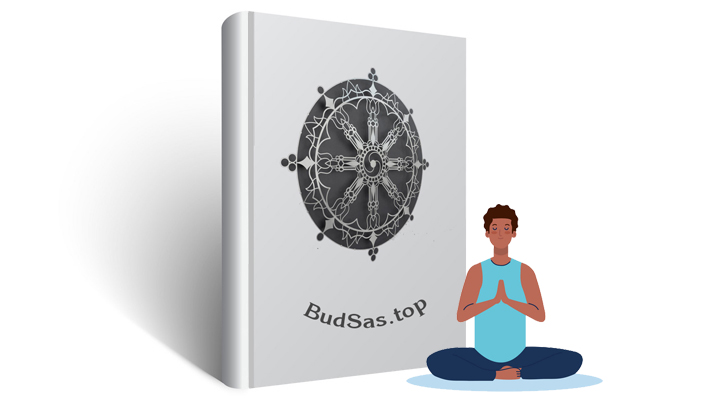THE PDF FILES ARE COMING SOON…
It is extremely difficult for one to become a Supremely Enlightened Buddha. First o f all one must have qualified oneself to receive the prediction from a living Buddha. This, too, is difficult because the following eight conditions have to be satisfied :—
1. That one is a human being. (It is not possible for a Deva ora Brahma to become a Buddha.)
2. That one is a man. (It is not possible for a woman, a hermaphrodite and so on who do not possess the 32 bodily signs o f a great man.)
3. That the inherent qualities o f Arahatship have already beenacquired in the existence when the prediction was made.
4. That one meets with a living Enlightened Buddha. (The wishcannot be fulfilled if it is made to an Enlightened Buddha who has passed away, to a Silent Buddha, to an Arahat or at a pagoda.)
5. That one is a Bhikkhu or, i f a hermit, one who has perfectconfidence in Kamma. (The wish to become an Enlightened Buddha made b y an ordinary person will not be fulfilled.)
6. That one has acquired the 8 attainments and 5 supernormalpowers. (One who has not acquired these attainments and powers is not able to examine and select the perfections to be practised.)
7. That one is ready to give up one’s life to the Enlightened Buddha.
8. That one has the dominant desire to practise and attain theperfections which are necessary for becoming an Enlightened Buddha.
TABLE OF CONTENTS
Foreword by Miss I.B. Homer
Preface by Thein Nyun
Introduction by U Narada
The Treatment of the Text
CHAPTER I. Classification and Unclassification
1. Aggregates
2. Bases
3. Elements
4. Truths
5. Faculties
6. Dependent Origination and so on
7. Triplets 22
8. Couplets too
The Classification Chart of Aggregates, Bases and Elements.
Method of Chapter I (see p. 157)
Explanation of the Method and Chart of Chapter I
Internal Tables (Abbhantara matika)
External Tables (Bdhira matika)
CHAPTER II. Classified and Unclassified
8 Questions and Answers
Chart: Method of Chapter II (see p. 158)
Explanation of the Method and Chart of Chapter II
CHAPTER III. Unclassified and Classified
12 Questions and Answers
Chart: Method of Chapter III (see p. 159)
Explanation of the Method and Chart of Chapter III
CHAPTER IV. Classified and classified
12 Questions and Answers
Chart: Method of Chapter IV (see p. 160)
Explanation of the Method and Chart of Chapter III
CHAPTER V. Unclassified and Unclassified
35 Questions and Answers
Chart: Method of Chapter V (see p. 161)
Explanation of the Method and Chart of Chapter V
CHAPTER VI. Association and dissociation
78 Questions and Answers*
1. Aggregates
2. Bases
3. Elements
4. Tmths and so on
5. Triplets
6. Couplets
CHAPTER VII. Associated and Dissociated
11 Questions and Answers
Chart: Method of Chapter VII (see p. 163)
Explanation of the Method and Chart of Chapter VII
CHAPTER VIII. Dissociated and Associated
2 Questions and Answers
Chart: Method of Chapters VIII and XIV (see p. 164)
Explanation of the Method and Chart of Chapters VIE and XIV
CHAPTER IX. Associated and Associated
34 Questions and Answers
Chart: Method of Chapters IX and XII (see p. 165)
Explanation of the Method and Chart of Chapter IX
CHAPTER X. Dissociated and Dissociated
56 Questions and Answers
Chart: Method of Chapter X (see p. 166)
Explanation of the Method and Chart of Chapter X
CHAPTER XI. Associated with, and Dissociated from, the Classified
8 Questions and Answers
Chart: Method of Chapter XI (see p. 167)
Explanation of the Method and Chart of Chapter XI
CHAPTER XII. Classified and Unclassified Concerning the Associated
31 Questions and Answers
Chart: Method of Chapter XII (see p. 165)
Explanation of the Method and Chart of Chapter XII
CHAPTER XIII. Associated with, and Dissociated from, the Unclassified
8 Questions and Answers
Chart: Method of Chapter XIII (see p. 167)
Explanation of the Method and Chart of Chapter XII
CHAPTER XIV. Classified and Unclassified Concerning the Dissociated
63 Questions and Answers
Chart: Method of Chapter XIV (see p. 164)
Explanation of the Method and Chart of Chapter XIV

![[PDF] The book of the Discipline – Vinayapiṭaka – The full 6 Volumes](https://en.namo84000.org/wp-content/uploads/2023/12/The-Book-of-the-Discipline-Vinaya-Pitaka.jpg)


![[En] Guide to Tipitaka](https://en.namo84000.org/wp-content/uploads/2021/10/Kinh-Phat-Quan-trong-2.jpg)